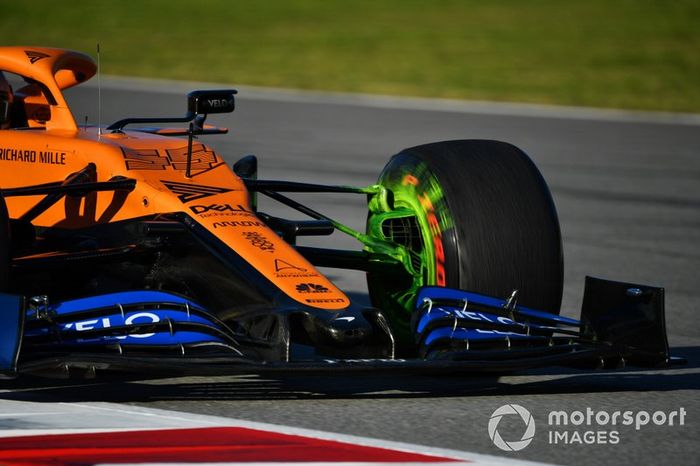The changes aimed at keeping McLaren ahead of the midfield
McLaren took an important step in its Formula 1 recovery last season, but it knows it is going to have a fight on its hands to repeat its best-of-the-rest tag this year.

Photo by: Giorgio Piola
Giorgio Piola's F1 technical analysis
Giorgio Piola is the preeminent Formula 1 technical journalist. View our full selection of Giorgio's technical illustrative content
The team is pushing hard to deliver just that, though, as Giorgio Piola and Matt Somerfield explore with their look at what steps the Woking-based team has made.
McLaren tested a revised front wing arrangement with its DNA rooted in the concept used last season. However, it features several key differences.
The most important change is to the footplate design, as not only is the main profile flattened out significantly (blue arrow), there’s now a lipped section on the outer edge (red arrow). Last year’s design is shown in the inset circle as a comparison.
This change to the footplate’s shape softens the vortex that’s usually created by the footplate. Meanwhile, a stronger pressure gradient is created by the new lipped profile on the footplate’s edge, which will pull on the airflow inboard of it and help to drive airflow across and around the front tyre.
To get the best out of these alterations, further optimisations have been carried out to the shape of the mainplane, as it now features a shallower curvature in the outboard section (black arrow), whilst the upper flap is now one continuous surface, rather than being separated into two, as it was before (green arrow).
This means that any change of flap angle will have a bearing on the entire surface, rather than just the inboard section.

McLaren MCL35 diffuser detail
Photo by: Giorgio Piola
Changes were also clear at the rear of the car during the second test, as the team fitted the MCL35 with a new floor and diffuser.
The most apparent change to the rear of the diffuser comes at the outboard section of the assembly, as the team now favours a more steeply sloped ceiling and more curved Gurney-like extractor strips to accentuate it.
More importantly, these changes take advantage of the larger internal dimensions of the diffuser itself, as the team have increased the height of the floor transition.
Here is a gallery of other important or interesting design elements:
Be part of Motorsport community
Join the conversationShare Or Save This Story
Subscribe and access Motorsport.com with your ad-blocker.
From Formula 1 to MotoGP we report straight from the paddock because we love our sport, just like you. In order to keep delivering our expert journalism, our website uses advertising. Still, we want to give you the opportunity to enjoy an ad-free and tracker-free website and to continue using your adblocker.





















Top Comments